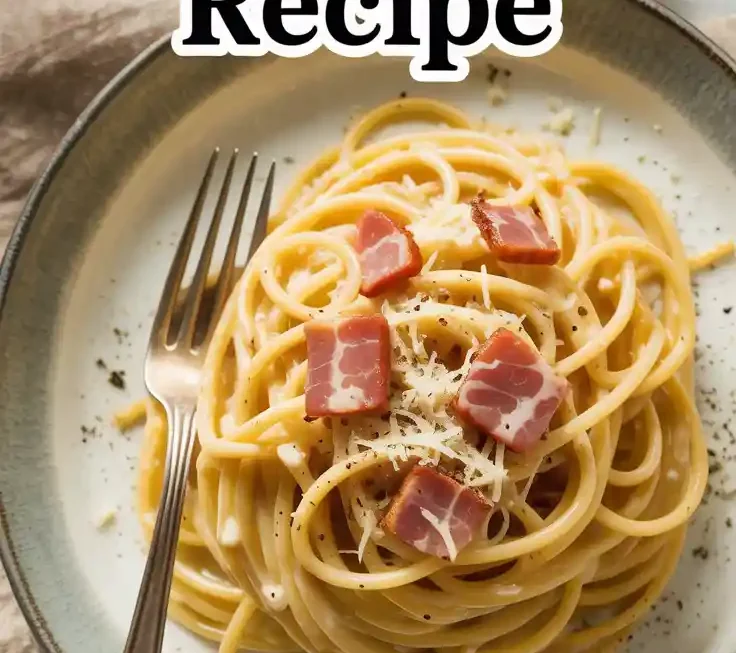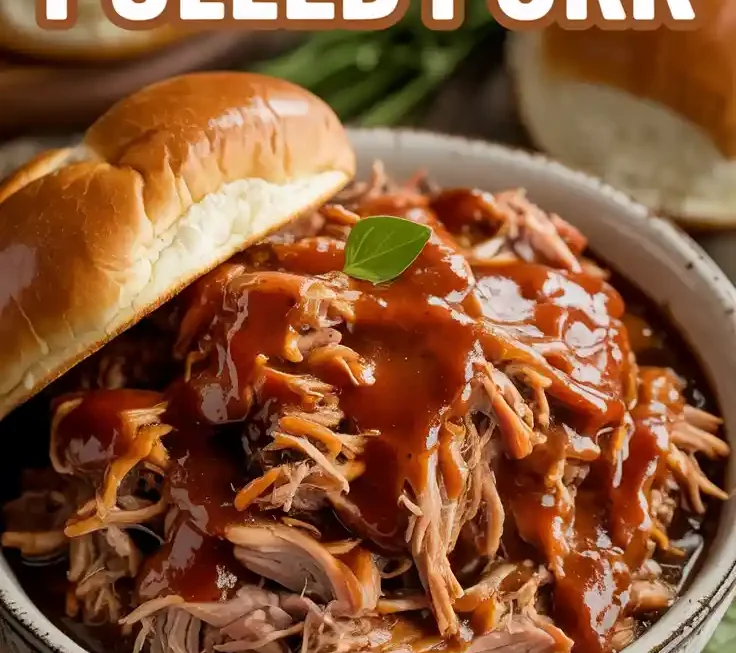Few dishes are as comforting, honest, and elegant as spaghetti carbonara. This classic Roman pasta comes together in less than 30 minutes, using just five humble ingredients—eggs, cheese, cured pork, pasta, and black pepper. Yet, when made correctly, it transforms into something creamy, silky, and deeply satisfying without a single drop of cream.
In this guide, I’ll walk you through the authentic method, explain the why behind each step, share pro tips to avoid mistakes, and help you master carbonara like a true Italian cook.
⭐ Why Carbonara Is Special
Carbonara is not about luxury ingredients—it’s about technique. The magic lies in the emulsion: hot pasta tossed with egg yolks, sharp cheese, rendered pork fat, and a splash of starchy pasta water. The result is a naturally creamy sauce without cream. It’s a dish born from simplicity and honesty, which is why it has stood the test of time.
🇮🇹 A Brief History of Carbonara
Carbonara’s exact origin is debated, but most agree it comes from Rome. One theory says it developed during WWII when Italian cooks used American bacon and eggs supplied by soldiers. Another links it to coal miners (“carbonaro” means charcoal burner in Italian), who needed hearty, quick meals.
No matter its origin, true carbonara remains minimalist: pasta, guanciale (or pancetta), Pecorino Romano, eggs, and pepper—nothing else.
🥓 Essential Ingredients & Why They Matter
- Spaghetti (400g / 14 oz) – Long pasta is ideal for coating evenly with sauce. Bucatini or rigatoni are good alternatives.
- Guanciale or Pancetta (150g / 5 oz) – Guanciale (cured pork cheek) is traditional, prized for its rich fat. Pancetta or streaky bacon work if guanciale isn’t available.
- Eggs (2 whole + 2 yolks) – The yolks create creaminess, while the whites add lightness. Room temperature eggs blend better.
- Pecorino Romano (60g / 2 oz, finely grated) – Sharp, salty, and authentic. Parmesan can be used, but it’s milder. Some cooks use a 50/50 mix.
- Black Pepper (freshly cracked) – Adds a spicy bite that balances richness.
- Salt (for pasta water only) – Season pasta, but use lightly since Pecorino and guanciale are already salty.
👩🍳 Step-by-Step Instructions
Step 1: Cook the Pasta
Bring a large pot of salted water to a rolling boil. Cook spaghetti until al dente (firm to the bite). Reserve 1 cup of pasta water before draining.
Step 2: Render the Pork Fat
Start with a cold pan. Add diced guanciale/pancetta and cook over medium heat. The fat will slowly render, turning golden and crisp. Turn off heat but keep fat in the pan.
Step 3: Mix the Sauce Base
In a bowl, whisk together 2 whole eggs, 2 yolks, most of the cheese, and lots of black pepper until smooth. This becomes the “raw sauce.”
Step 4: Combine Pasta & Pork
Add drained pasta to the pan with pork. Toss well so it’s coated in rendered fat. Remove pan from direct heat.
Step 5: Emulsify with Eggs & Cheese
Quickly pour the egg-cheese mixture over pasta. Toss vigorously. The residual heat will gently cook the eggs into a silky sauce. If it feels too thick, add reserved pasta water, 1 tablespoon at a time, until glossy and creamy.
Step 6: Serve Immediately
Top with remaining cheese and more black pepper. Serve hot—carbonara waits for no one.
🔥 Pro Tips for Perfect Carbonara
- Always remove pan from heat before adding eggs to prevent scrambling.
- Use freshly grated Pecorino/Parmesan for smooth melting.
- Save pasta water—it’s liquid gold for adjusting sauce texture.
- Don’t rush: vigorous tossing is the secret to creamy carbonara.
🚫 Common Mistakes to Avoid
- ❌ Adding cream – unnecessary, ruins authenticity.
- ❌ Cooking eggs on heat – turns sauce into scrambled eggs.
- ❌ Not salting pasta water enough – leads to bland results.
- ❌ Using cold pasta – the sauce won’t emulsify properly.
🍷 Serving Suggestions & Pairings
- Wine: A crisp Italian white wine (Frascati, Pinot Grigio) or a light red (Chianti) pairs beautifully.
- Side dishes: A simple green salad with olive oil & vinegar, or rustic bread to mop up the sauce.
- Dessert: End with tiramisu or panna cotta for a true Italian night.
🥡 Storage & Leftovers
Carbonara is best eaten fresh. If you must save leftovers, refrigerate for up to 1 day. Reheat gently in a pan with a splash of hot water—never in the microwave.
📋 Authentic Spaghetti Carbonara Recipe
Course: Dinner, Main | Cuisine: Italian | Difficulty: Easy
Servings: 4 | Prep Time: 10 mins | Cook Time: 20 mins | Total: 30 mins | Calories: ~580 kcal
Ingredients
- 400g (14 oz) spaghetti
- 150g (5 oz) guanciale or pancetta, diced
- 2 whole eggs + 2 yolks
- 60g (2 oz) Pecorino Romano (finely grated)
- Freshly cracked black pepper
- Salt (for pasta water)
Instructions
- Cook spaghetti until al dente. Reserve pasta water.
- Render pork in a cold pan until golden & crisp. Remove from heat.
- Whisk eggs, yolks, Pecorino, and pepper until smooth.
- Toss pasta in pork fat. Remove from heat.
- Quickly add egg mixture, tossing vigorously. Adjust with pasta water.
- Serve immediately with extra Pecorino and pepper.
🥗 Nutrition Information (per serving)
| Nutrient | Amount |
|---|---|
| Calories | 580 kcal |
| Protein | 24 g |
| Carbohydrates | 60 g |
| Fat | 24 g |
| Saturated Fat | 8 g |
| Fiber | 3 g |
| Cholesterol | 210 mg |
| Sodium | 640 mg |
❓ Frequently Asked Questions
Q: Can I make carbonara without pork?
Yes—though less authentic. Try smoked turkey or mushrooms for a vegetarian version.
Q: Is it safe to eat raw eggs in carbonara?
The residual heat of the pasta cooks the eggs gently, making them safe. Use fresh, high-quality eggs.
Q: Can I use Parmesan instead of Pecorino?
Yes. Parmesan is milder; Pecorino is sharper and saltier. A 50/50 mix works well.
Q: Why shouldn’t I use cream?
Because the emulsification of eggs, cheese, and pork fat naturally creates creaminess. Cream masks the real flavor.
🏆 Final Thoughts
Spaghetti carbonara is the ultimate example of Italian cooking: simple ingredients, perfect technique, and unforgettable flavor. Once you master the method, you’ll never need cream, shortcuts, or extras again.
Cook it fresh, serve it hot, and enjoy every creamy, peppery bite—just as the Romans intended.



